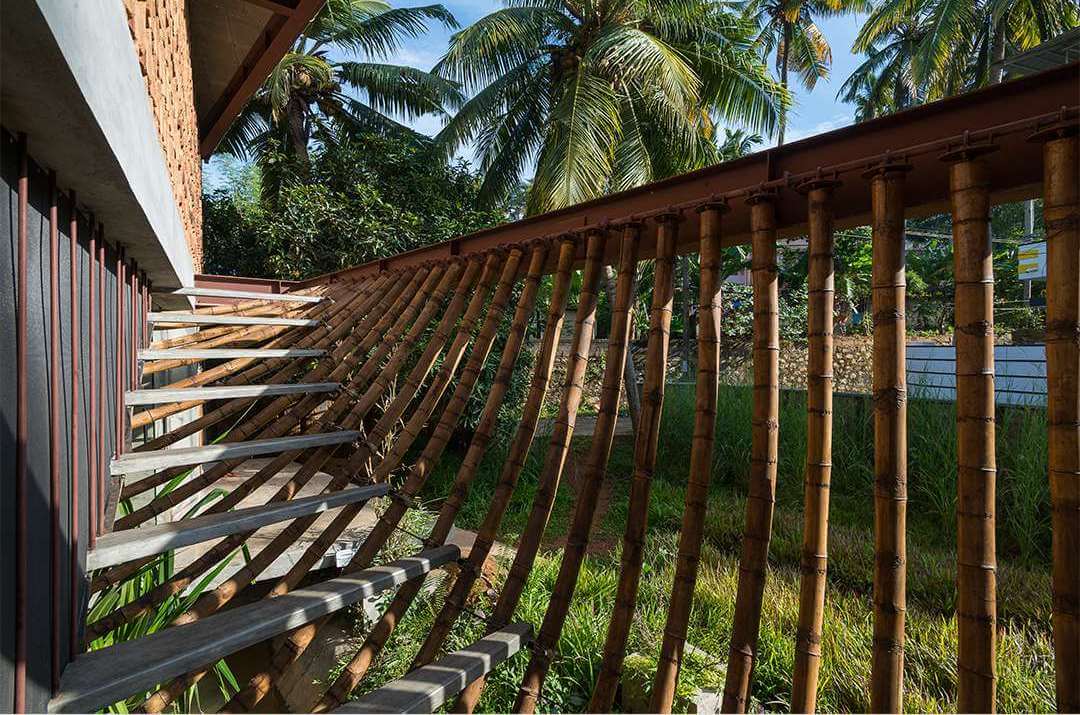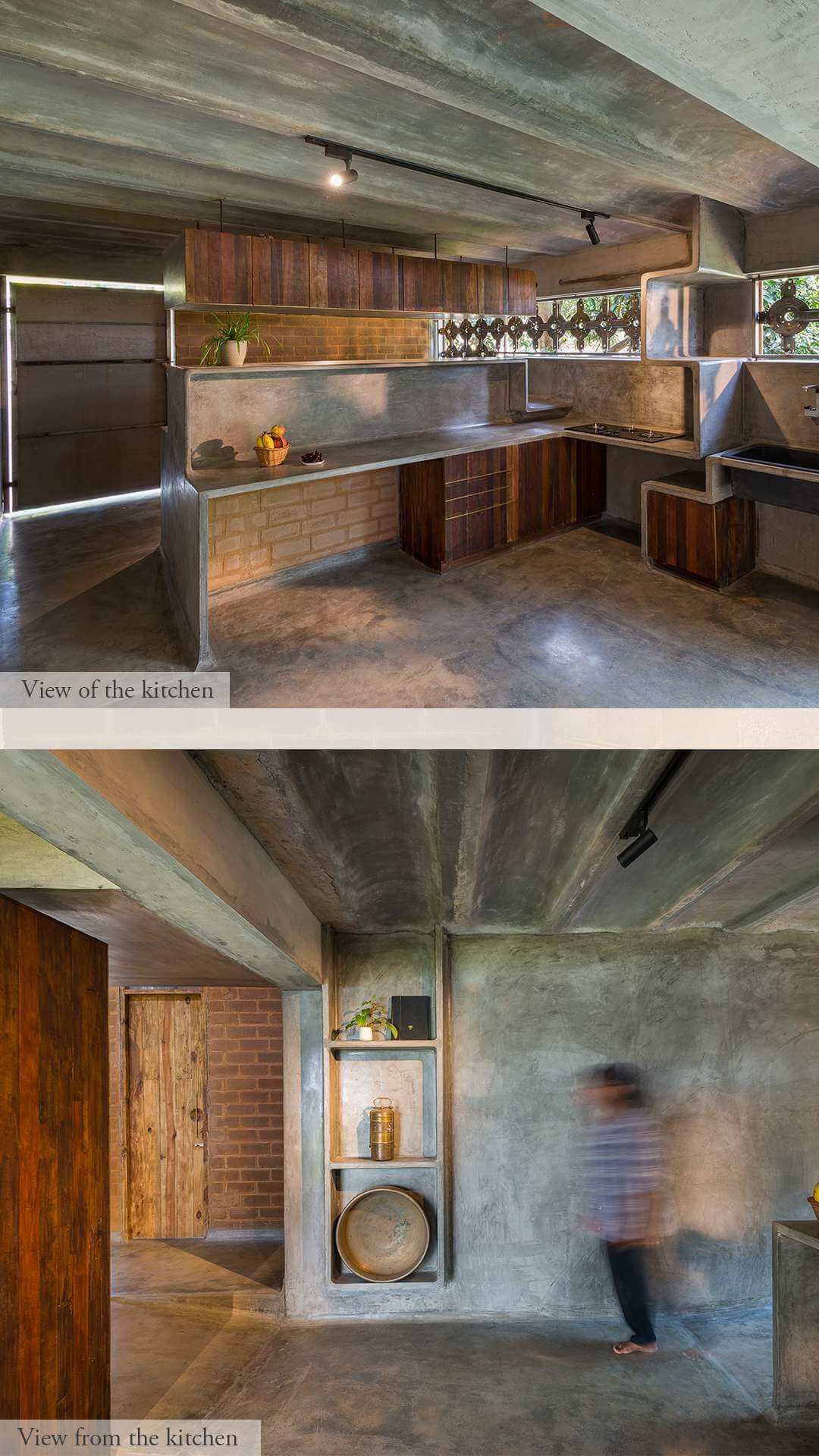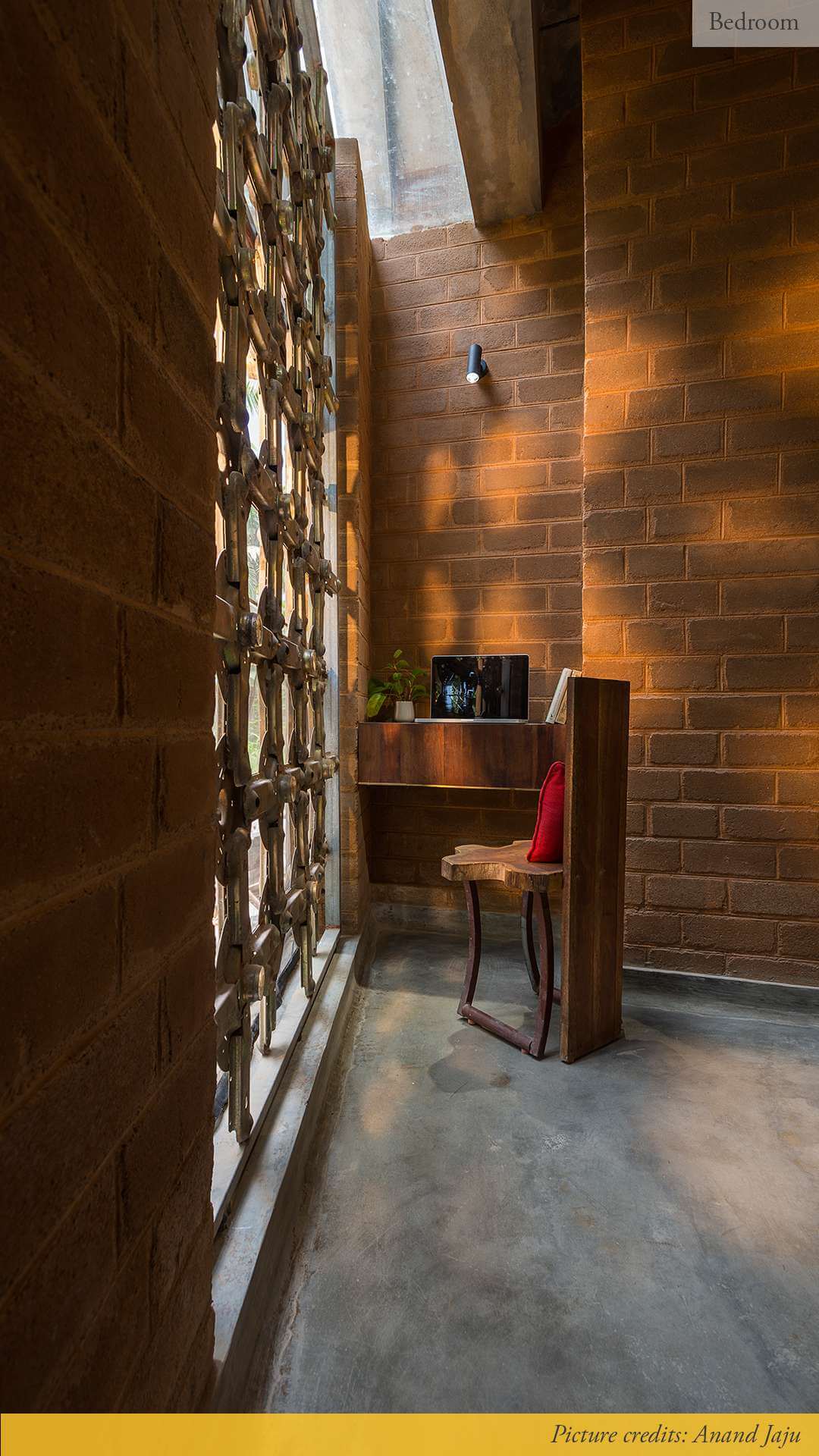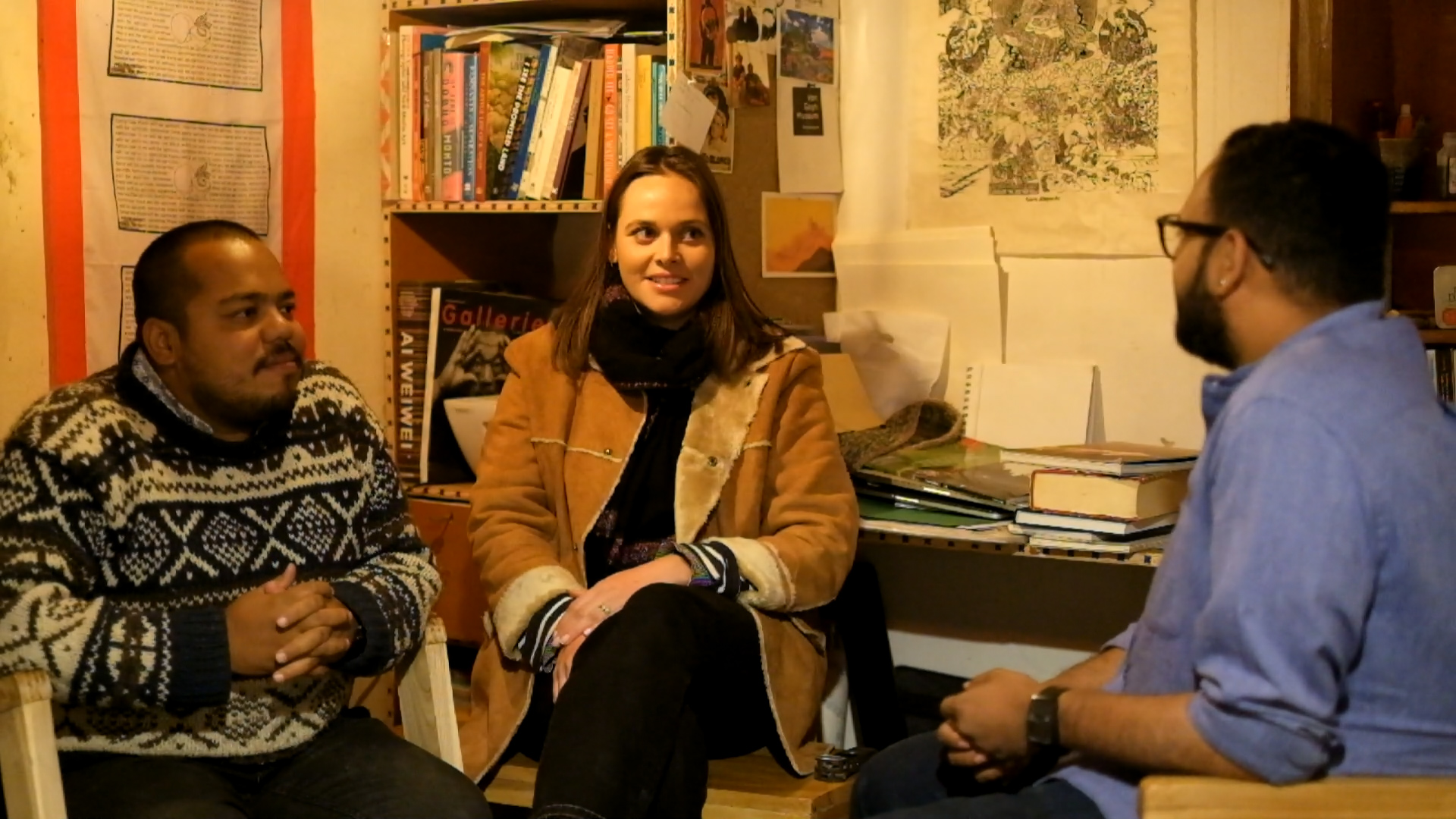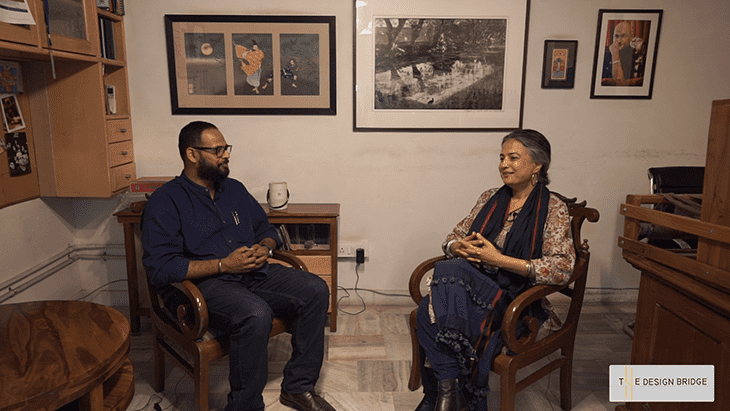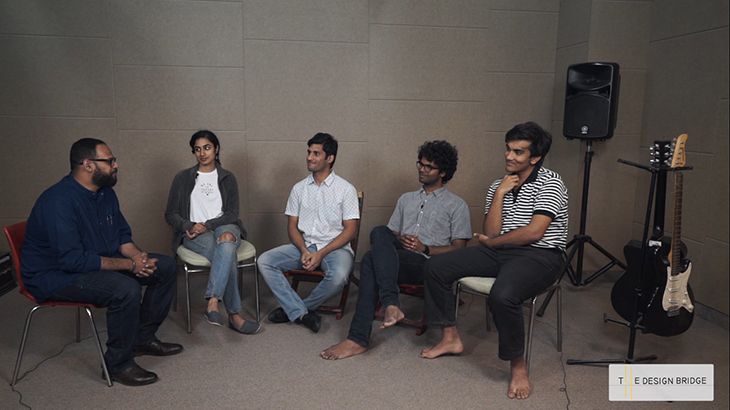
Wallmakers
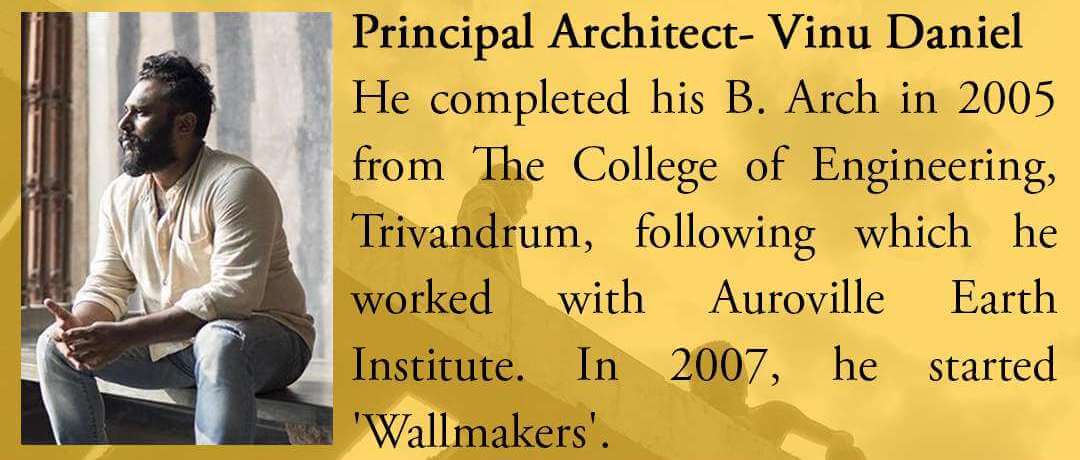
By 2008, they had received an award for a low cost, eco-friendly house. Many such eye-openers projects in the course of his practice prompted them to resolve to devote their energies towards the cause of sustainable and cost-effective architecture.

Philosophy
The practice has devoted itself to the cause of using mud and waste as the chief components, to make structures that are both, utilitarian and alluring. What is waste? Waste can be classified as anything that was produced, used and then discarded from its original function. While the work and construction of a building results in the production of a lot of scrap, they believe in not being deterred by this demon, but instead have learnt to build with it.
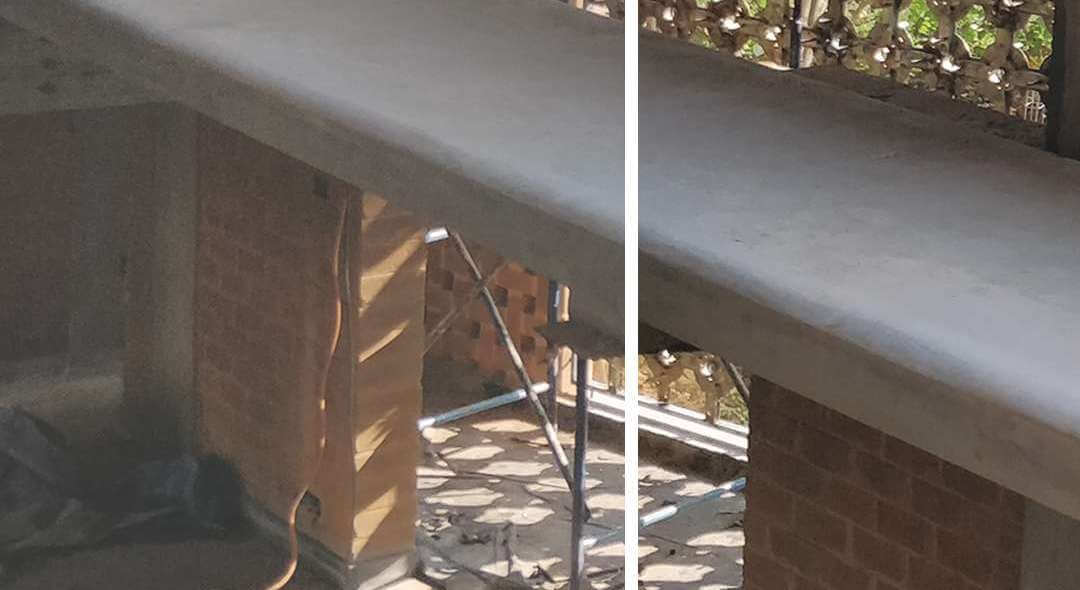
Project Details
- Type: Residential
- Status: Completed
- Area: 3100 sq.ft.
- Project Timeline: March 2017 - August 2019
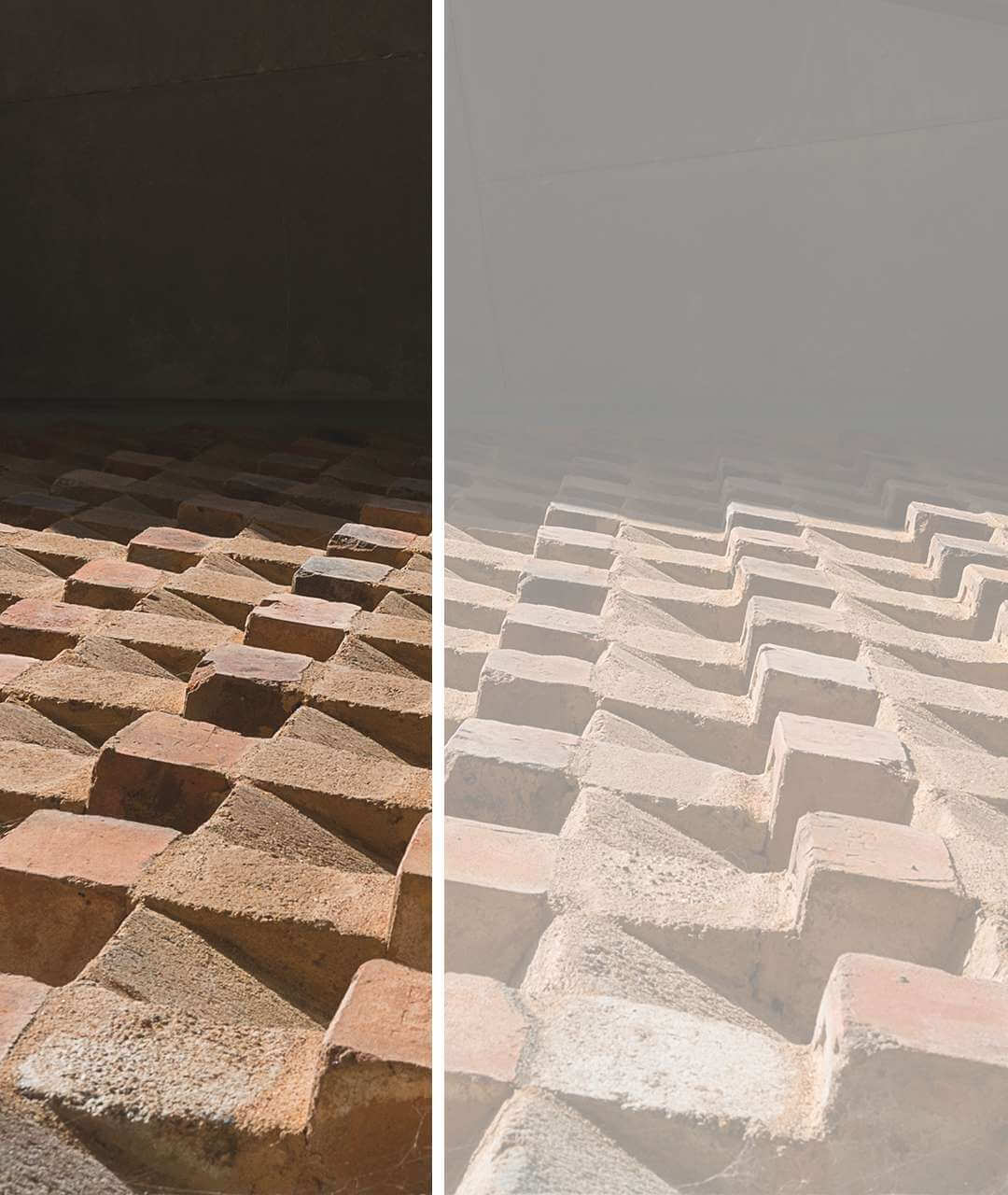
Client's Brief
The client based in Delhi wanted an eco-friendly abode that also retains the peace and quiet in the busy city of Trivandrum.
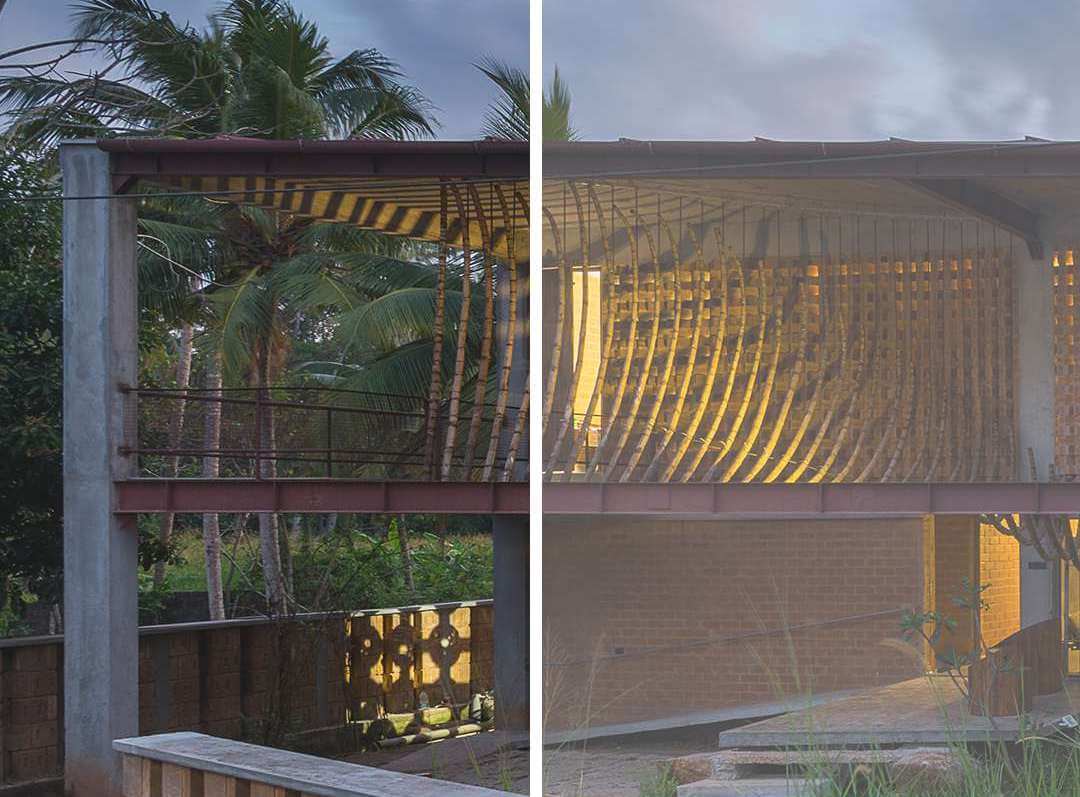
Architect's Intake
To design a residence that depicts an atmosphere that is an oxymoron in nature -Serene and warm, with oininimalistic decors, at the same time adventurous and wild in design.
Challenges
The site was on a low-lying terrain with issues of water logging, which was the primary obstacle to tackle. Being in a state like Kerala, where rains are frequent, they had to ensure that the water percolates into the ground and that it could be harvested.

Benefits
Using bamboo for the facade had a downside to it which is that it is precarious and cannot support an entire edifice of an enormous size. This is the barrier that demolished and proved wrong by dint of this project.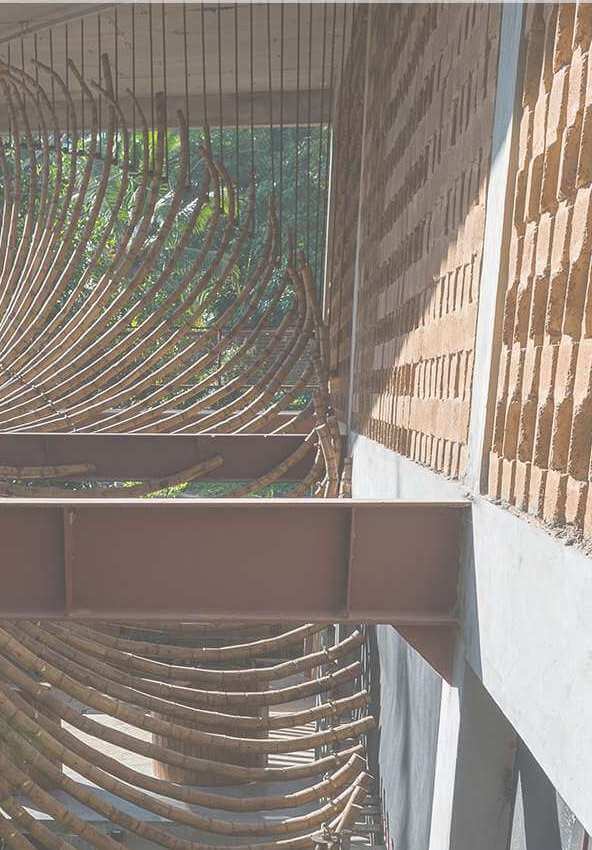
The bamboo facade is created and conserved in a stable position by reinforcing the bamboo with steel rods. The continuous string of bamboos handed the front elevation to the residence supporting the staircase that hangs from it.
Ground Floor Plan
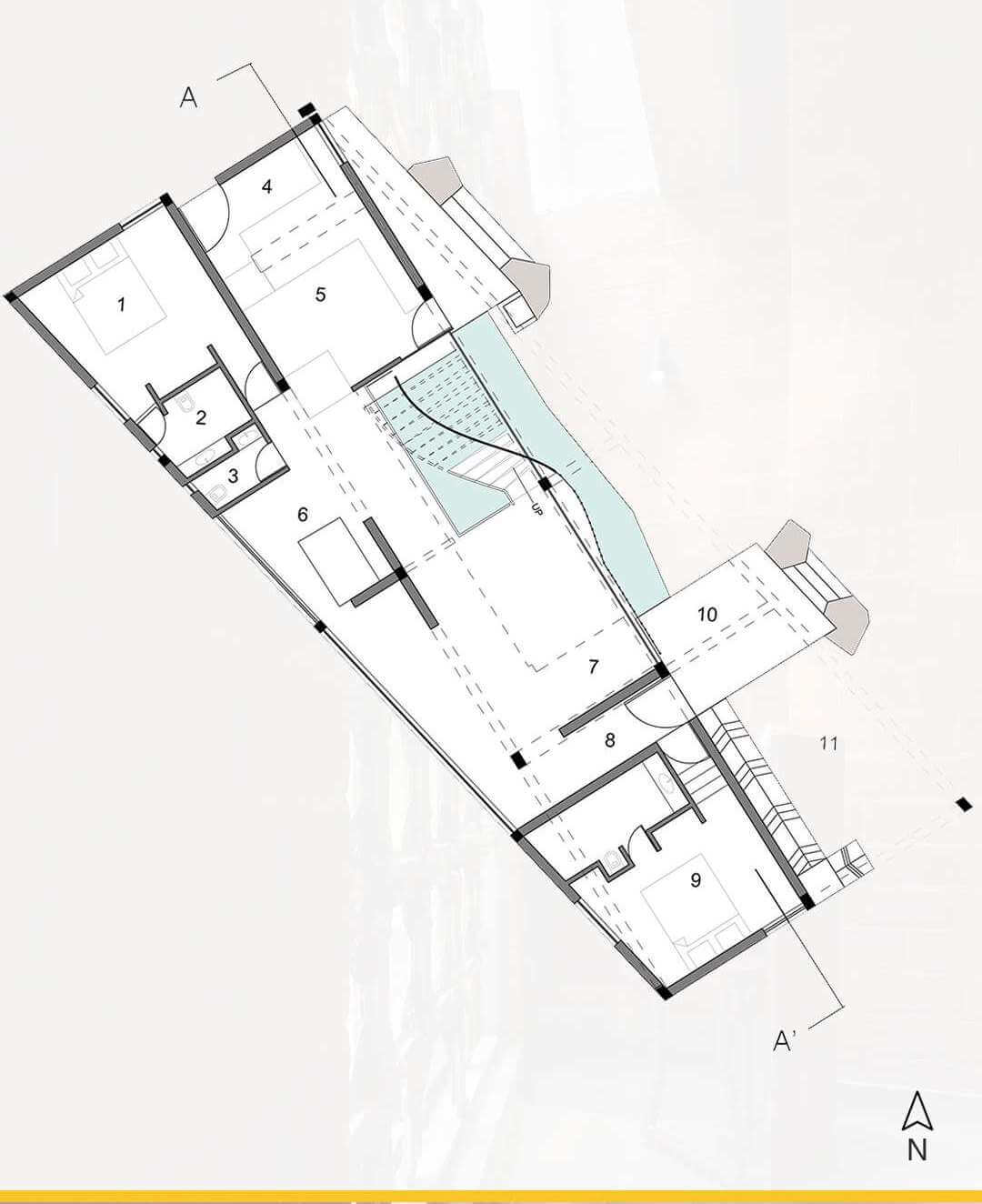 1. Master Bedroom
2. Toilet
3. Common Toilet
4. Work area
5. Kitchen
6. Dining room
7. Living room
8. Foyer
9. Guest Bedroom
10. Sit-out
11. Porch
1. Master Bedroom
2. Toilet
3. Common Toilet
4. Work area
5. Kitchen
6. Dining room
7. Living room
8. Foyer
9. Guest Bedroom
10. Sit-out
11. Porch
First Floor Plan
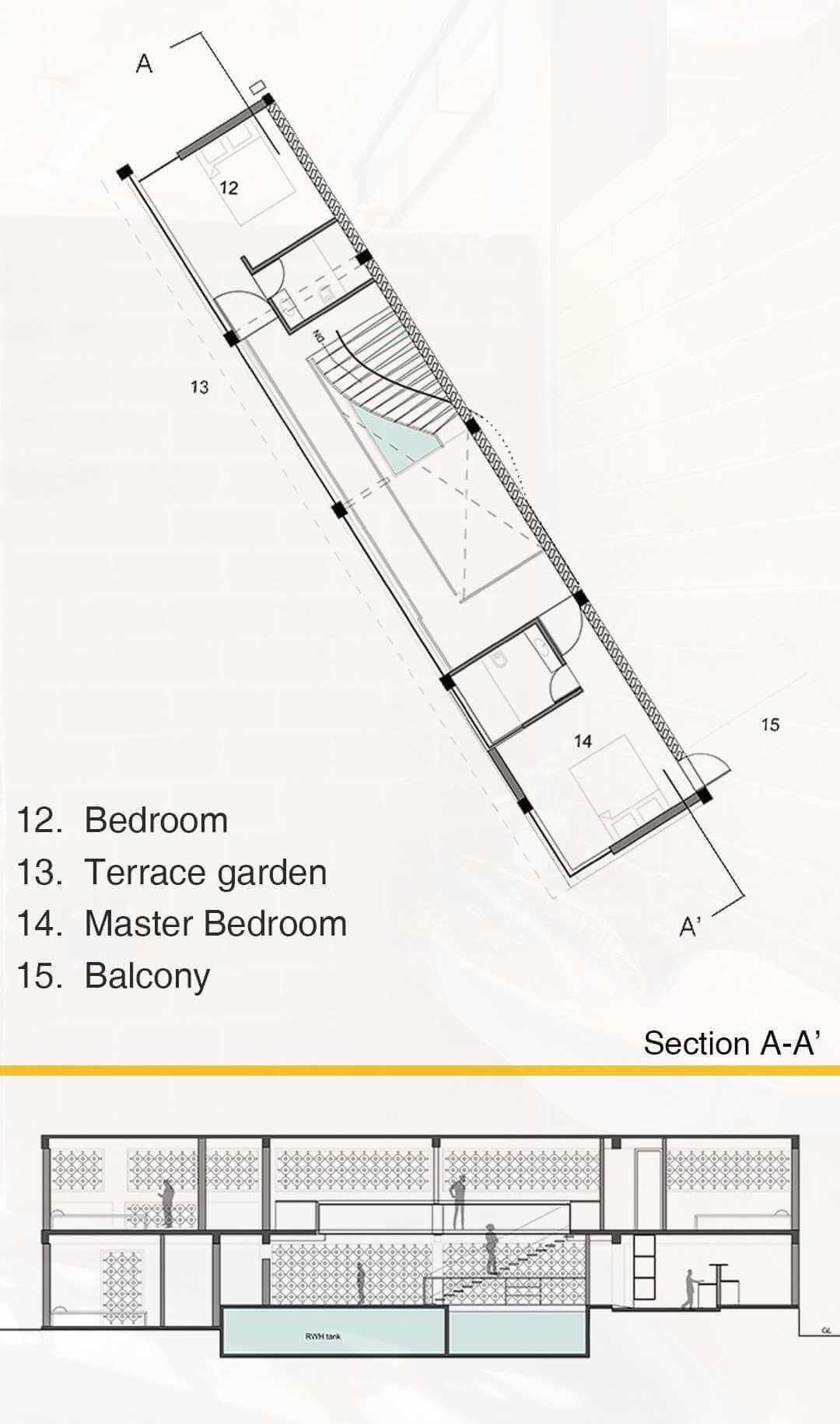
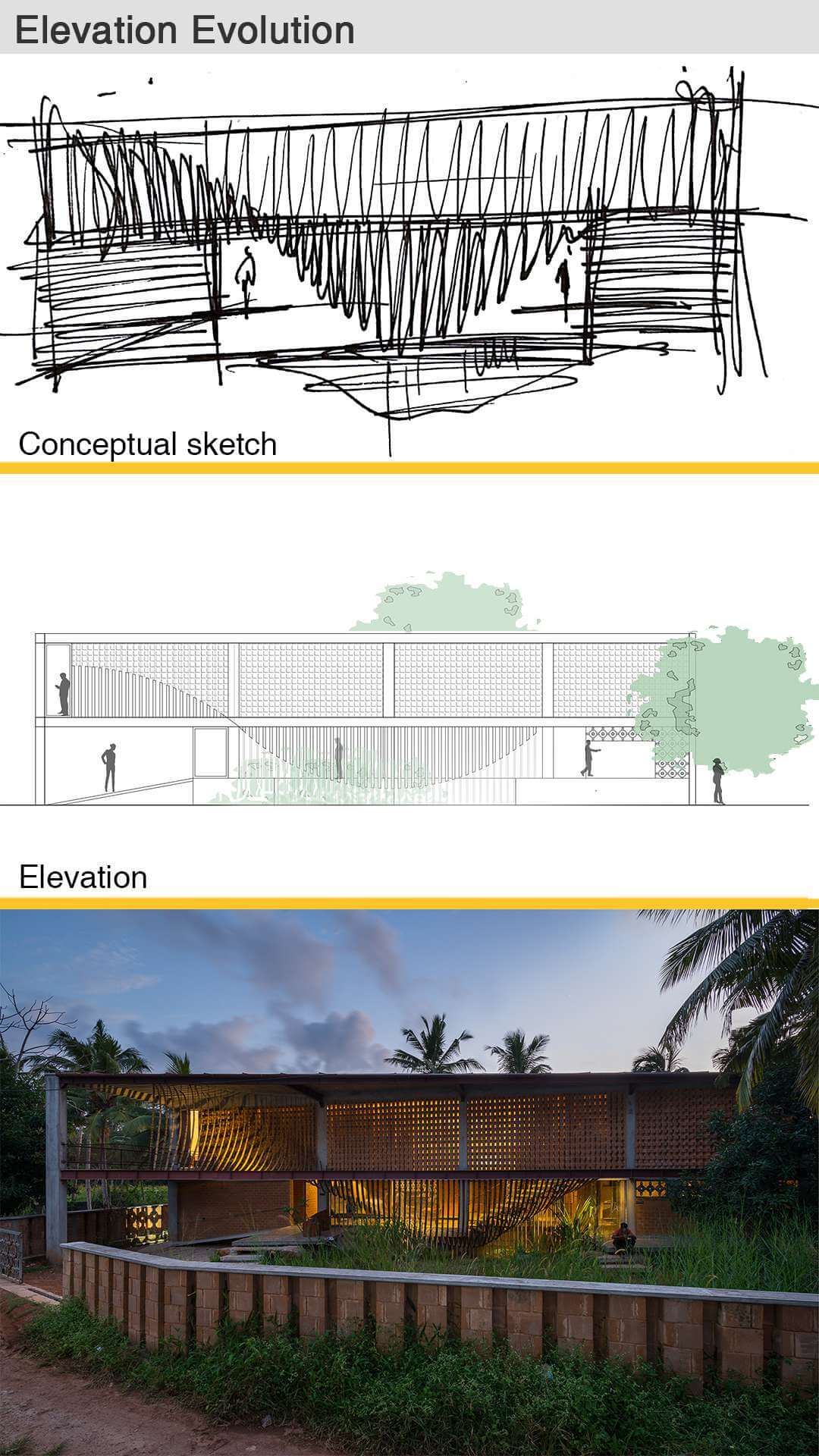
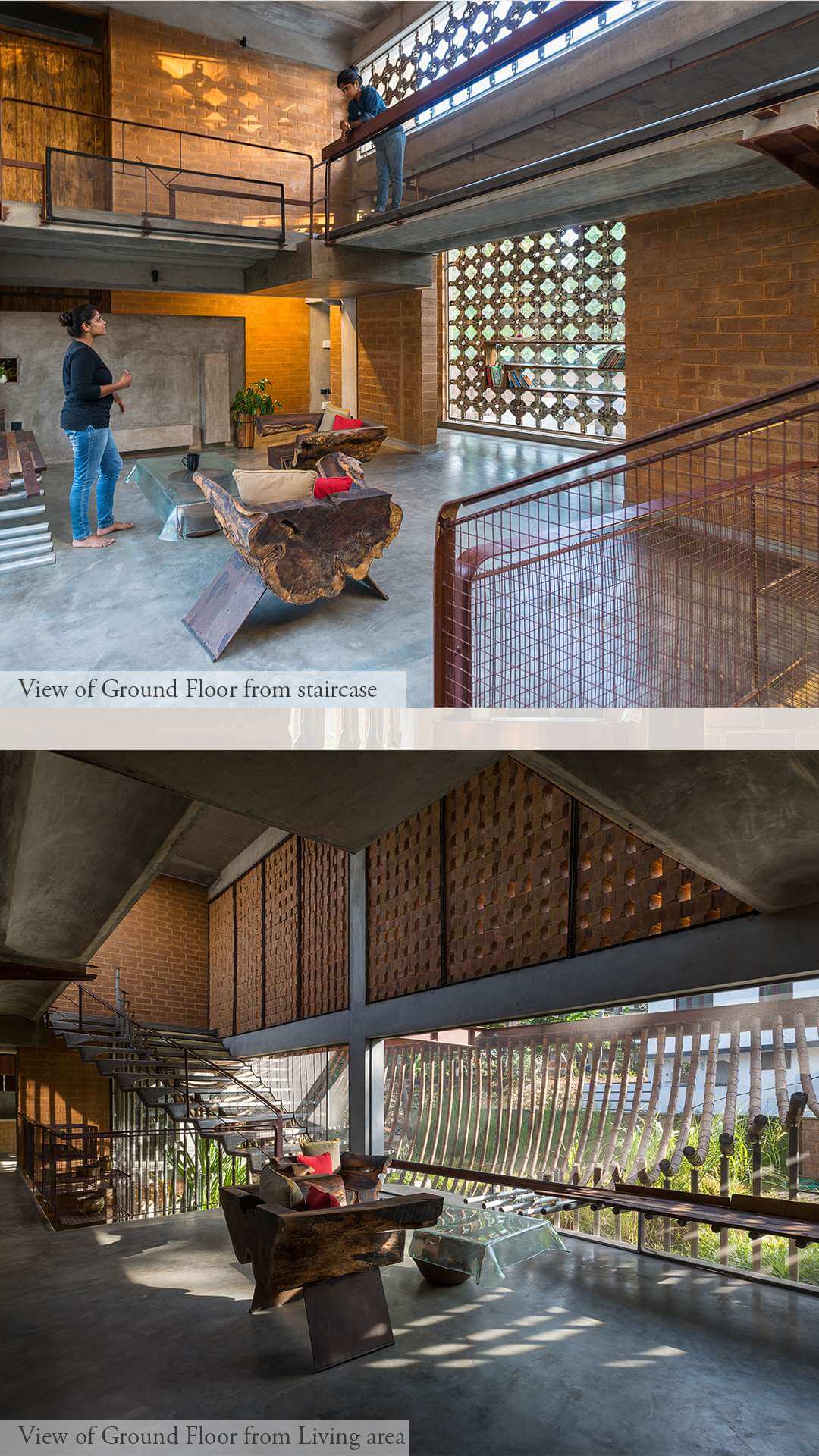
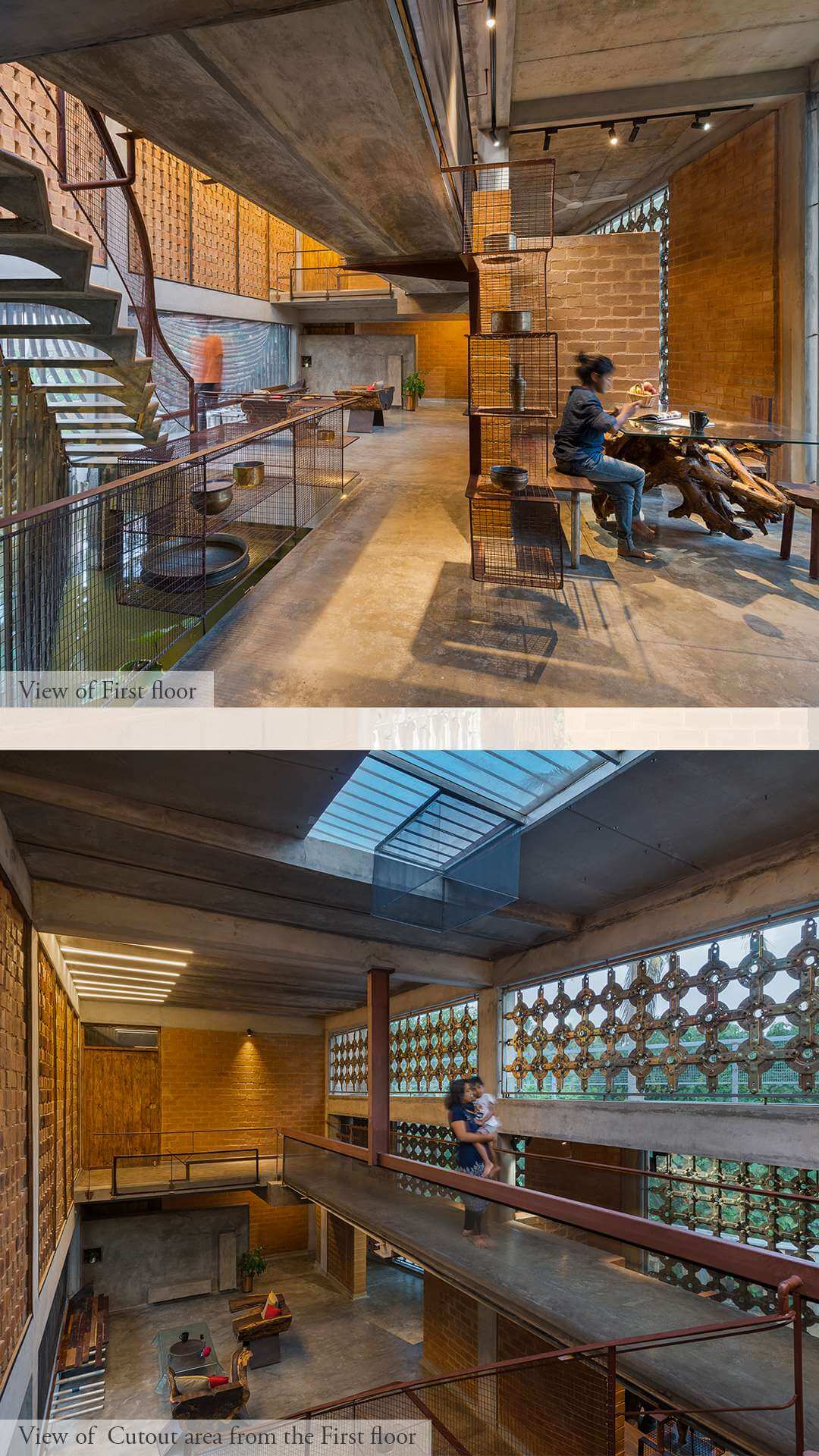
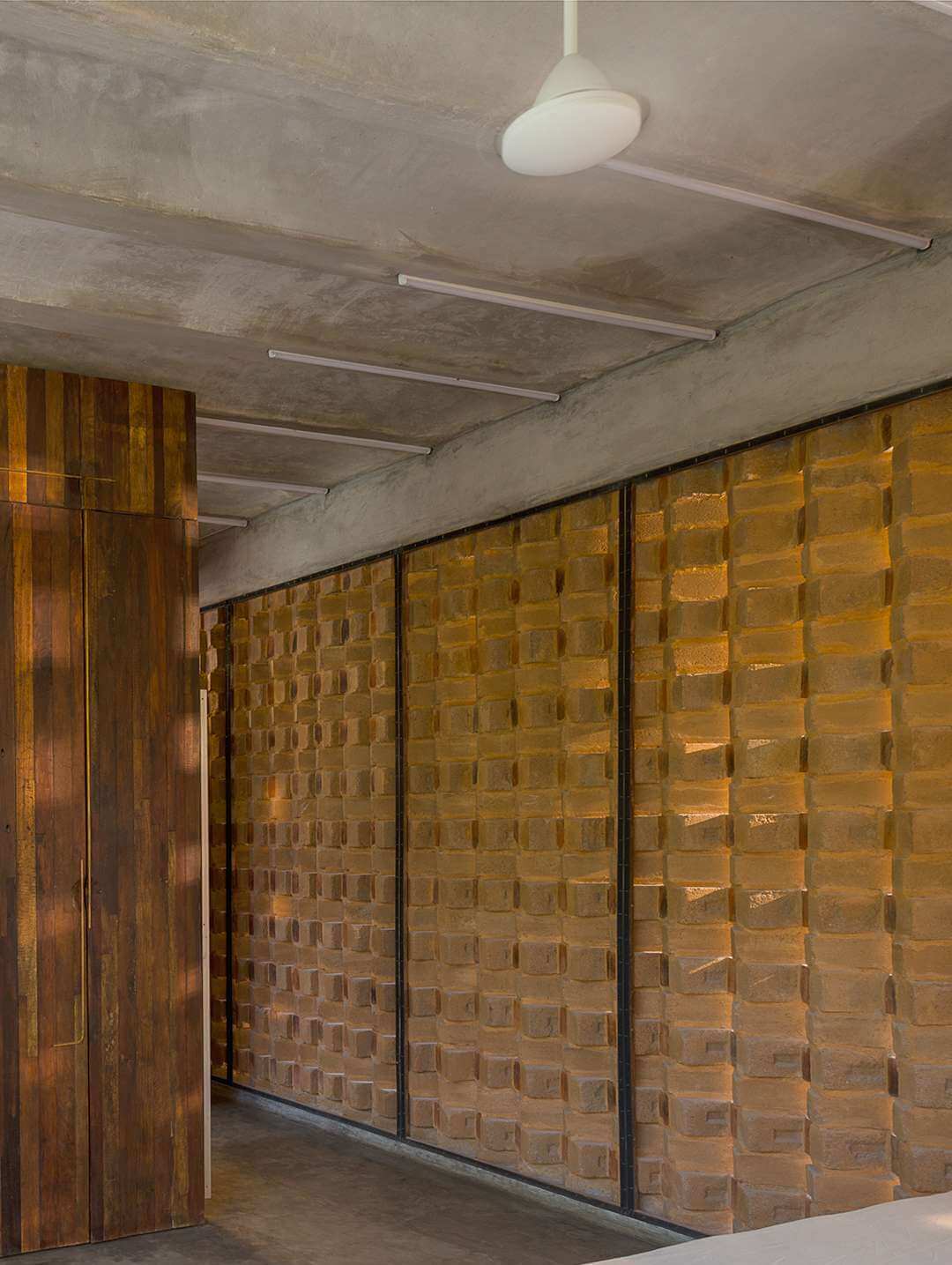
The distinctive form of CSEB bricks (Compressed Stabilized Earth Blocks) has been used to create a rotating Jali work to impart privacy to the bedrooms. Apart from the marvel the light creates; the consecutive polar arrangement allows uninterrupted flow of air allowing ample ventilation.
Reuse
The use of the Base plate of Washing Machines as scrap grills instead of fresh factory made ones is an imperative part of the residence. Use of such grills propagates the idea of up-cycling as well as serves as a medium of income for labourers who part their sweat to create exquisite pieces of art.
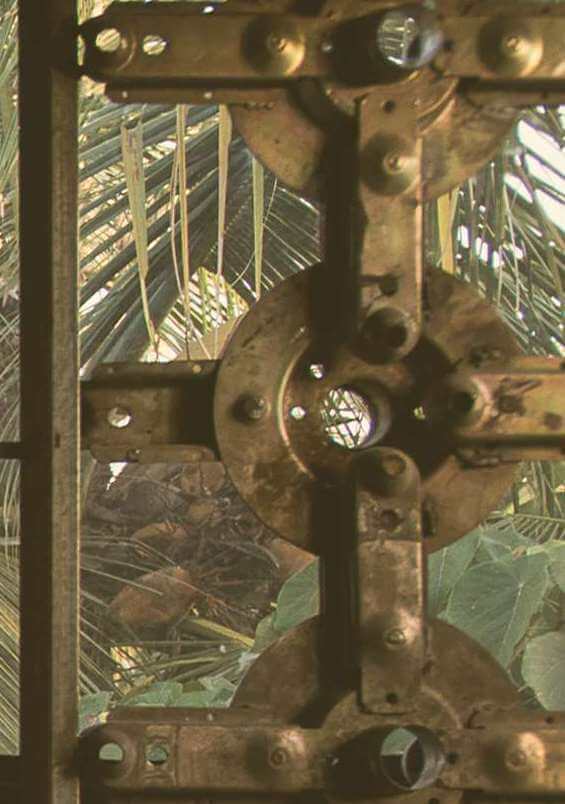
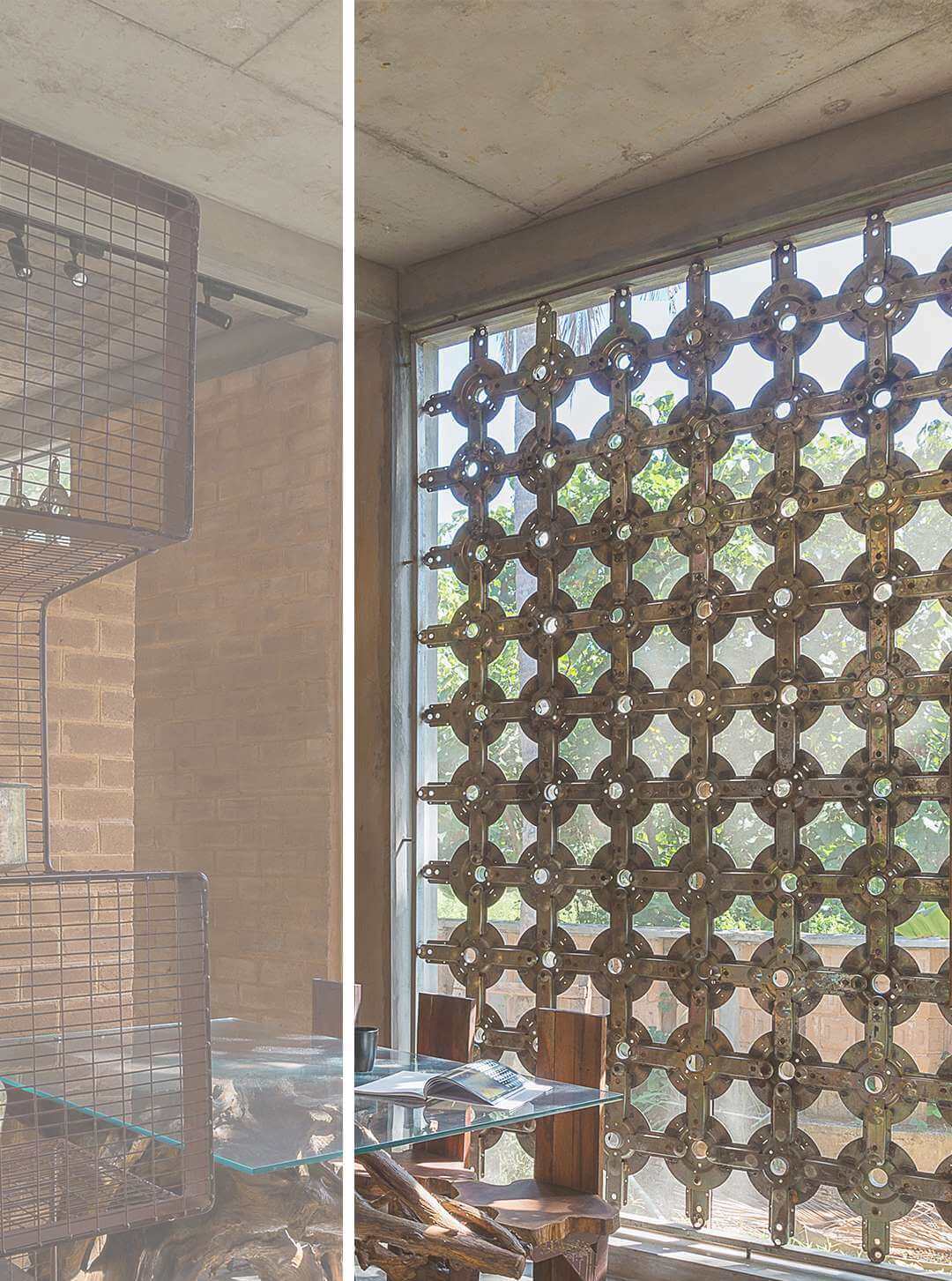
The architect tried to bring small changes in the usual routine of wastage by inculcating something we regularly see in junkyards. The use of washing machine motor base plates, welded together not only encourages sustainable living and reuse but also adds to the beauty of the residence.
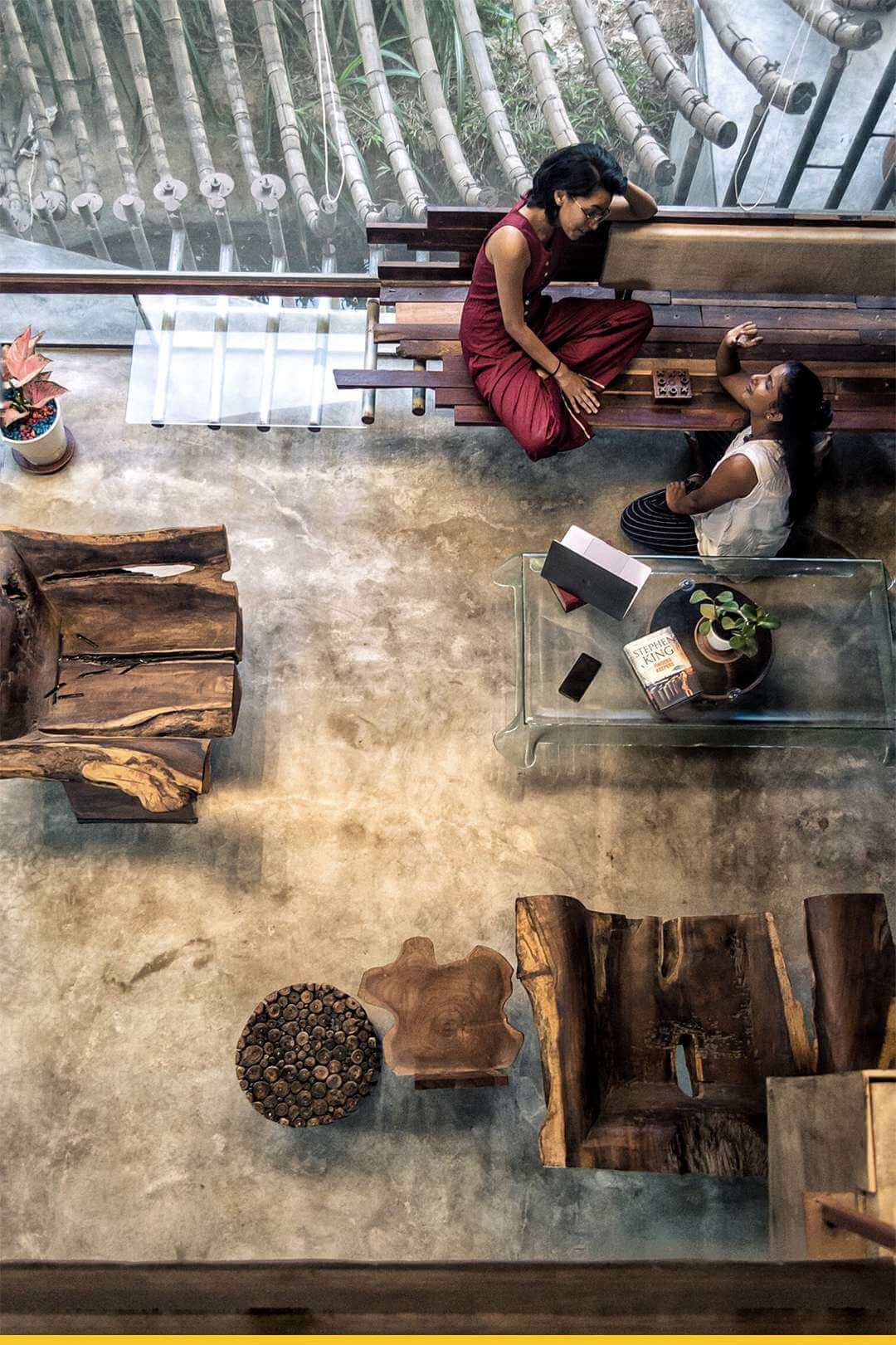
The architects made use of uprooted trees and waste wood from saw mills as the furniture for the residence. The simplistic and minimalist interiors of the residence sets it apart.

The structure connects closely to nature in terms of terrain, design and materials alike. The residence hugs and stays close to the environment of peace around it and the outgoing and cordial vibe within the four walls of the residence.
